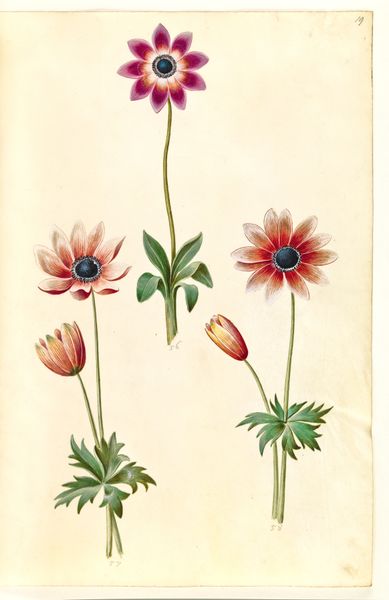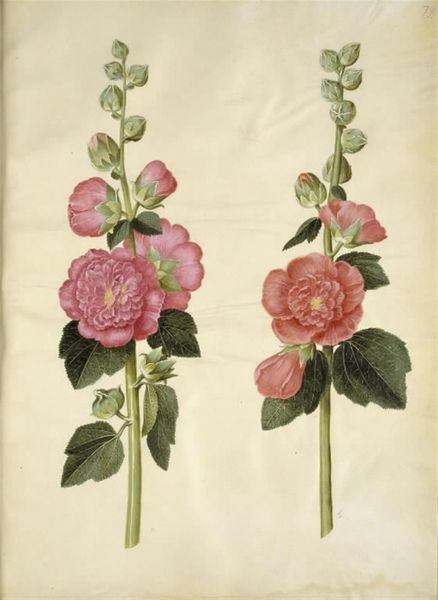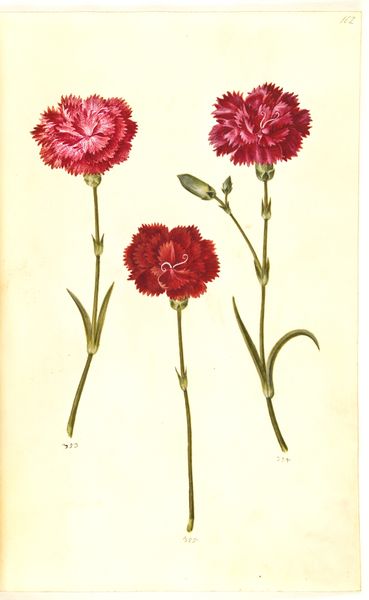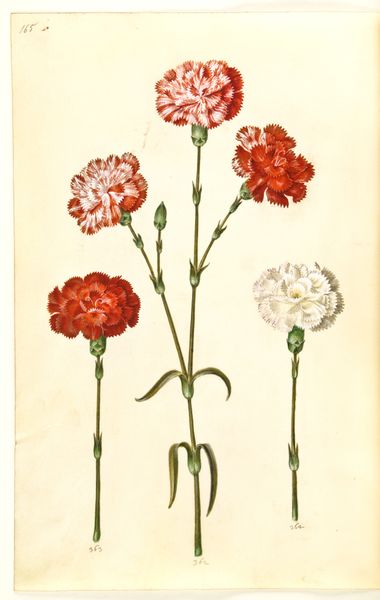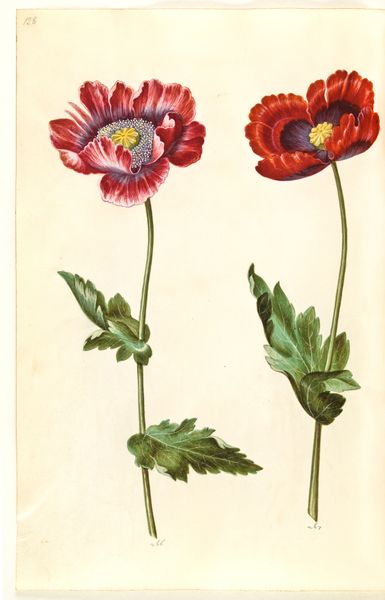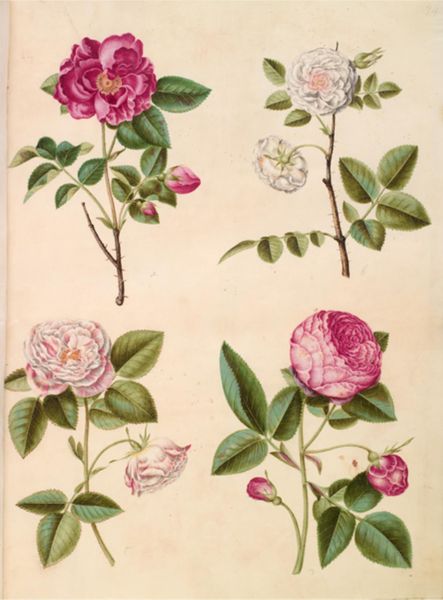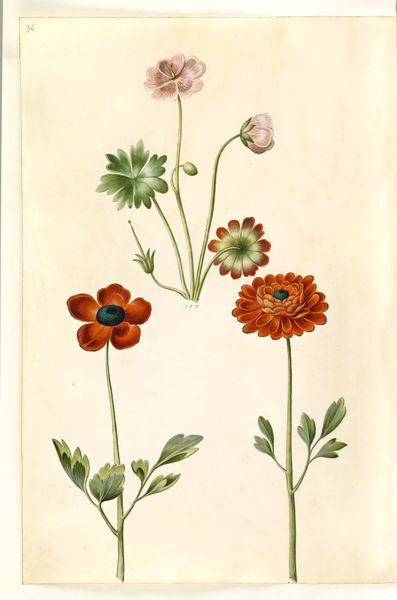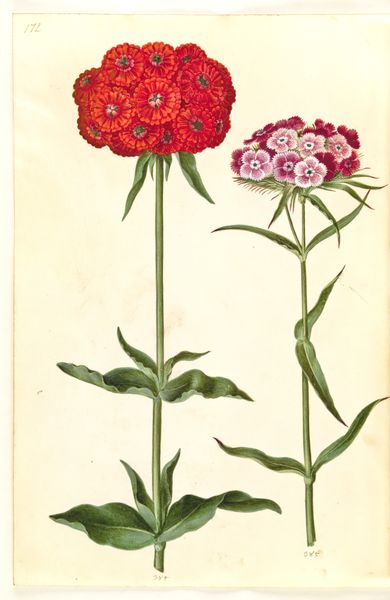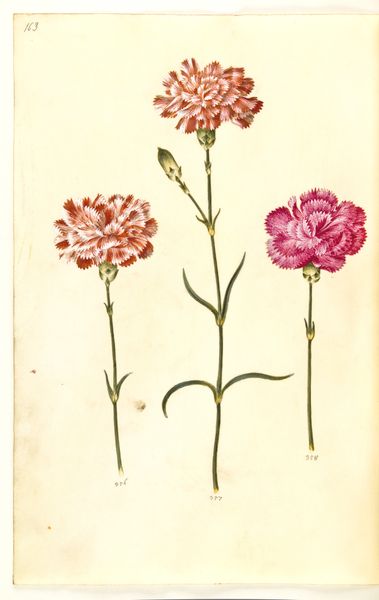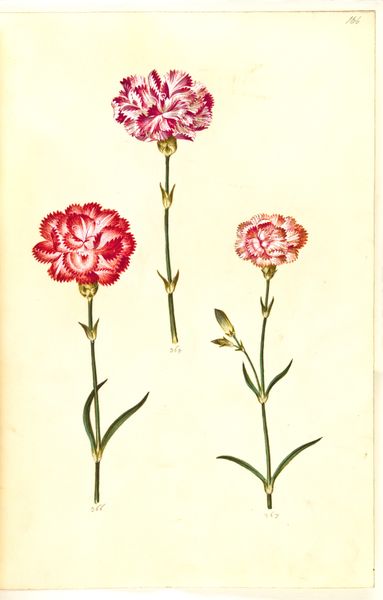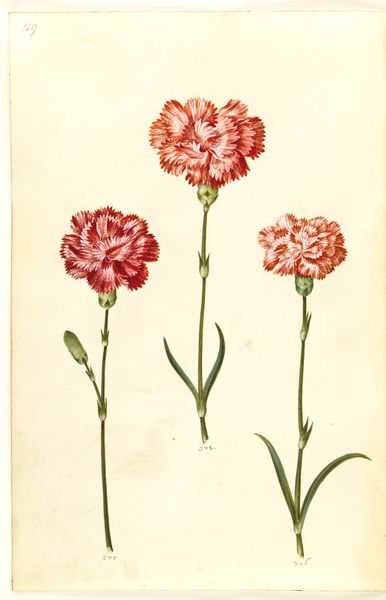
drawing, gouache, watercolor
#
drawing
#
water colours
#
gouache
#
watercolor
#
botanical art
#
watercolor
Dimensions: 505 mm (height) x 385 mm (width) (bladmaal)
Hans Simon Holtzbecker created this representation of *Paeonia officinalis*, or bonderose, using watercolour and gouache. The peony, with its lush petals, has long carried a rich symbolic weight, particularly in Eastern cultures. It embodies prosperity, honor, and even bravery. In ancient Greece, the peony was linked to healing, said to have been named after Paeon, physician of the gods. We see echoes of this reverence in medieval Europe, where it was cultivated in monastery gardens for its medicinal properties. Consider how the act of depicting the peony transforms it. It's no longer merely a flower, but a vessel carrying centuries of human hopes and associations. This duality—beauty and healing—speaks to our deepest desires. It's the cyclical nature of life, death, and rebirth made visible. The peony, through Holtzbecker's rendering, becomes an emblem of enduring human aspirations, resurfacing time and again in art, culture, and the collective psyche.
Comments
No comments
Be the first to comment and join the conversation on the ultimate creative platform.
